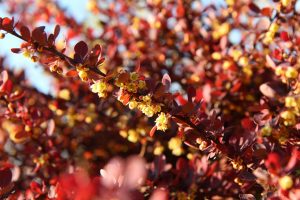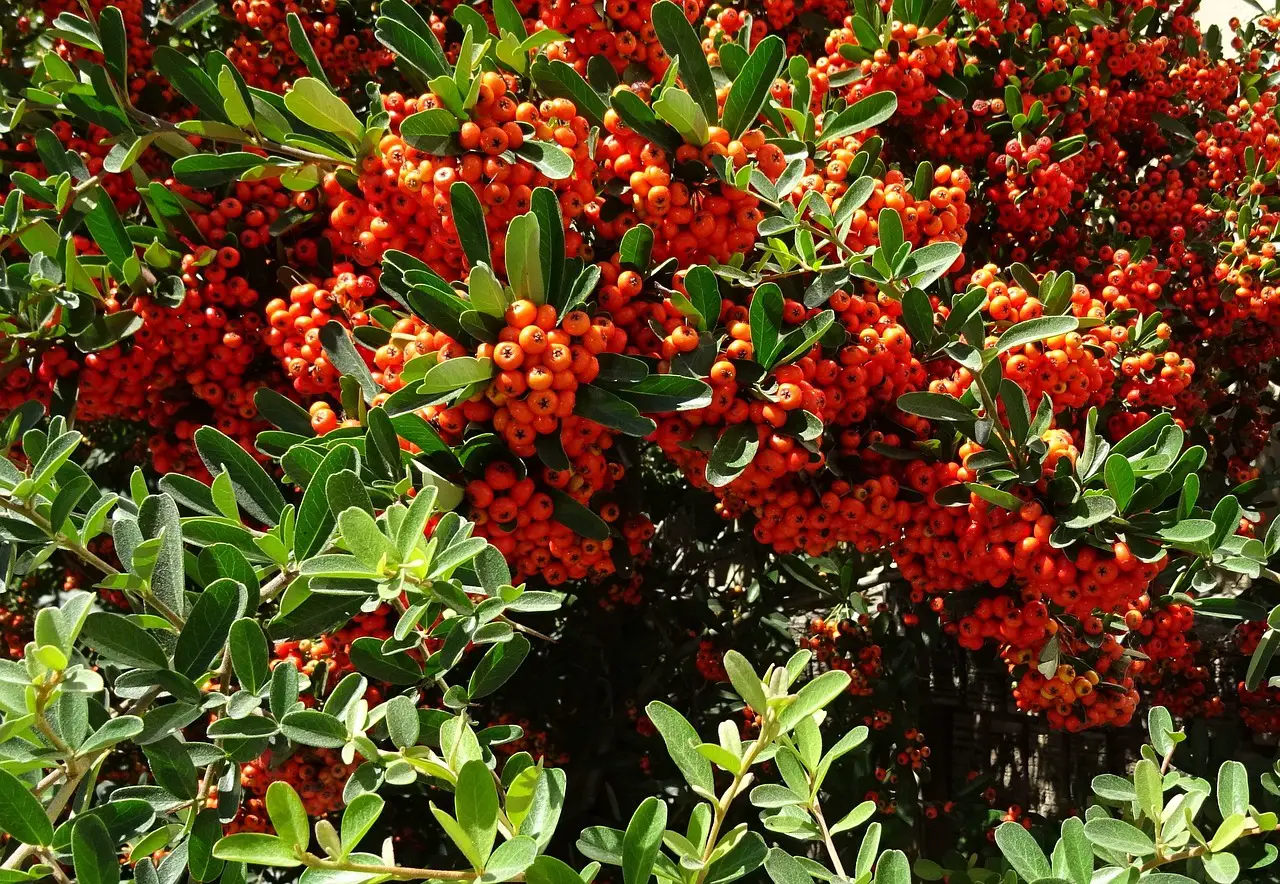Last Updated on February 15, 2022 by Real Men Sow
Pyracantha can thrive in both high-temperature environments and low temperatures at night. They make exceptional ornamental trees for small and large gardens thanks to their flowers and berries. They are ideal for hedging because of their dense growth and vicious thorns. A fully grown Pyracantha is not something anyone would want to cross.
They will grow in any type of soil, but they are not able to tolerate waterlogged conditions. Although it prefers loam soil, this is not necessary. The plant prefers full sunlight, it can also thrive in partial shade. Therefore, you should avoid placing it in full shade.

It will tolerate drought and rarely needs watering once it is established. When it is planted against a wall, you will need to water during prolonged drought periods. Pyracantha can be grown in a variety of ways. It can be used as a specimen shrub, or as a hedge or as a fence or hedge. Because it is very sharp and can not be separated, it makes a great barrier hedge. Pyracantha is a favorite place for birds to nest, as they are protected against predators and also get to eat the berries. Bees love the flowers.
Planting And Pruning Pyracantha
- You should choose a position that is full sun to part shade. It needs air circulation to thrive so it should not be planted in the corners of fences or walls.
- Add lots of compost to heavy soils and make sure it drains well.
- You can plant it all year long as long as the soil isn’t frozen and that you water well when it gets dry. This shrub is best planted between March and April and September through October.
- Dig a hole twice as wide as the root ball. Add a few drops of blood, fish, and bone to the hole and then work it into the ground.
- Fill the hole with soil to the same depth as the pot. Firmly but gently fill the hole around the root ball. To settle the soil around the root ball, water well.
Pyracantha can be grown as a dense hedge if you space the plants 60cm apart.
Taking Care of Pyracantha
Pyracantha shrubs are durable and can be pruned after they have established. They have deep roots and can search for moisture far below the soil surface. A few handfuls of bone, blood, and fish can be given to the plant in April to help it grow.
Water younger plants, up to 2 years old, if the conditions are dry. It will establish a strong root system by receiving a twice-yearly feed of blood, fish, and bone in spring or autumn. The area surrounding the plant’s base should be free of weeds, grass, and other debris.
Pruning Pyracantha
The shape and size of the plant will determine how often you prune it. Pyracantha can grow happily without pruning and will form a bush of approximately 4m / 13ft in height. Allow the pyracantha to grow for two to three years before you prune it. This will allow it to establish a strong root system.
The best time to prune a Pyracantha is during its third or fourth year. This is usually around mid- to late May in the UK. This is because berries will be produced later in the year if the stems have flowers. You can identify the flowers at flowering and avoid excessive pruning.
The following is the steps in pruning pyracantha
STEP 1. Remove any stems that aren’t producing any flowers and stop them from producing berries. These stems will continue to produce leaves and contribute to the evergreen appearance, so don’t completely remove them. Reduce the length of nonflowering stems by a third to one-half of their length.
STEP 2. Certain varieties of Pyracantha can be susceptible to fungal diseases, such as fire blight, scab and fire blight. These problems can be prevented by ensuring that the shrub has good air circulation. You should look for the oldest stems in the center of the shrub. If you find them, remove one to five of them.
STEP 3. The stems that are reaching further than the rest of your pyracantha if they have been properly pruned in previous years will be those that were cut back. To maintain their shape, trim some of them and encourage the formation of new stems in the following year. These should not be cut too hard.
Avoid Thorns When Pruning Pyracantha
To avoid injury from the thorns, use thick gardening gloves when pruning pyracantha. Allow water to drain from the top of the cut by cutting the stems at a downward angle. Avoid crushing the stems and use sharp secateurs. Keep in mind the basics of pruning and combine them with the above steps. Adjust the pruning to fit the particular growing conditions of your pyracantha.
Remember that Pyracanthas can become wild, out of control, or overgrown. They are hardy shrubs and can be pruned at any time. It is okay to cut the plant in half. It’s a good time to cut the plant in half.
While the flowers and berries may not be as beautiful in the first year of pruning, they will get better the second year. You should be careful when pruning it. The vicious thorns and fallen stems could cause serious injury.
Growing Pyracanthas In Containers
A single Pyracantha will grow very happily in a large container. A diameter of 45cm or more is about right. Fill with standard multi-purpose compost. A container-grown pyracantha should be fed monthly between mid-March to mid-August with a handful of blood, fish, and bone. It will of course require regular watering. Wait each time until the top 3cm of the compost is dry and then water well.
Pruning is as described above although you may prune more frequently to keep the plant to shape and an appropriate size for the container. It does help if the shrub is in a heavy container to avoid it easily being blown over.
Pests and Diseases That Can Harm Pyracanthas
Pyracantha can be affected by two major diseases: fire blight and scab. Both are listed below. This is why it’s advised to choose a pyracantha from the ‘Saphyr series, which has significant resistance to both diseases.
Scab
Scab is a fungal infection that causes black spots on the leaves and berries. Although it is not always visible, it can also cause damage to the flowers. Here is Pyracantha Scab’s life cycle:
Summer
The first infection usually occurs in summer, but it is not noticeable the first year.
Autumn and Winter
The fungus can overwinter and infect the leaves and berries during the first winter and autumn. Mid-summer to winter is when the fungus attacks leaves and berries. If not treated, the cycle will continue with greater force.
To prevent this problem from happening, the first step is to plant resistant varieties like the ‘Saphyr series. Next, clear up fallen leaves and burn them throughout the year, especially in fall.
Spring
Spring spores are released by fallen leaves. They spread to new leaves via wind and water splashing. In late spring, secondary spores are released which can cause more infection. Higher humidity and temperatures can lead to more damage.
Fire Blight Affecting Pyracanthas
The symptoms of fire blight are the same as those in scab. Fireblight of Pyracantha is a bacterial infection that appears much faster than scab symptoms and can be more severe.
It is important to know that fire blight infections can also be transmitted to pyracantha by infected plants like apples, pears, and hawthorn.


